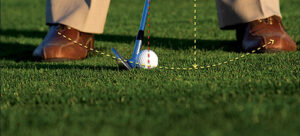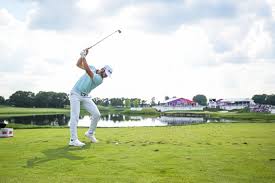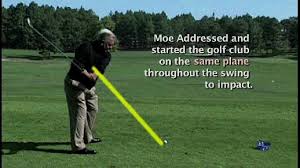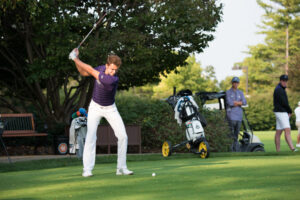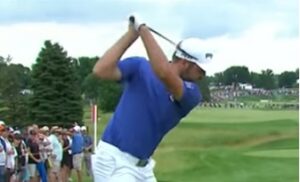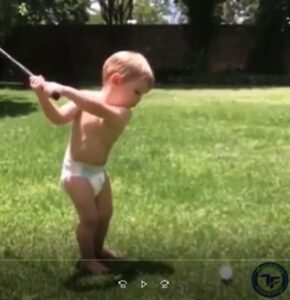That may seem like a pretty strange phase for a golf training solution but stay tuned and I guaranty that it will turn your drives on. Yes, shallowing your driver in the backswing will be a key for your future power and consistency with your driver. The length of your driver is actually messing up the swing that you have honed with your irons. It’s easy to make your downswing from the inside with your iron and not as easy with your much longer driver.
We are all watching the pros swing their driver on TV and it appears so easy. They seem to swing back on one plane and then swing down on a slightly lower plane. Well as it turns out for recreational players it ain’t so easy.
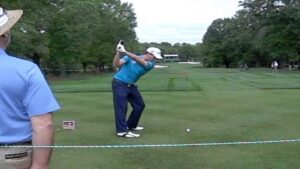
Webb Simpson shallows his driver in the downswing so that his trailing elbow almost grazes his rib cage for Power and Consistency.
David Leadbetter and Jim McLean both talk about swinging from the inside or from the slot. It’s easier said than done.
Top Speed Golf Blog gave us 3 areas to focus on at impact (for right handed golfers)
1/ Your left bicep should be squeezing against your left chest or peck muscle,
2/ Open your hips first (as you are rotating them toward the target)
3/ Your swing is to the right of your target line or you may feel that way as you shallow your club in the downswing.
Swing Trick to Shallow your Club in the Downswing
I saw this in Rory McIlroy’s swing as he likes to take a wide or straight back takeaway which is on a more vertical plane than his wider and flatter downswing. You should actually feel more power thrown into your swing as you thrust from the inside and up your target line. You may even feel your trailing elbow graze my rib cage on the way down. That forces my early hip rotation and my shallow swing “up the slot”.
In slow motion you can see a slight loop at the top of the swing during the transition. That loop creates the shallowing of the driver club head. You only need to practice this with your driver as it is your longest club so it naturally needs to be dropped or shallowed from the top of the swing.
Brooke Henderson is about 5 foot 6 inches tall but she uses the longest regulation shaft (mind you, she does chock down on her grip). Her loop at the top is very exaggerated but it has a huge impact on her ability to hit longer drivers than most of the LPGA pros.
If you are very tall and have no problem with your hip and shoulder rotation in your backswing, you may not need to shallow your club in the downswing. But for golfers who struggle with consistency and power you should try to loop and shallow your driver head from the top of your swing. The 3 points listed above will make it happen automatically.
Learning to shallow your driver from the top takes a little practice. Try it out with your leading arm straight using your GOLFSTR+ for your straight arm swing. Buy one today at www.GOLFSTR.com
Golf Truism #13: No foursome in front of you ever played too fast.




